Herbal, Plant and Seaweed Teas & Liquid Feeds
These provide a natural source of plant nutrients and an alternative to chemical fertilisers and pesticides which may harm insects, wildlife, plants and the soil.
Fermented, or plant, teas are typically produced by soaking un-decomposed plant leaves and shoots in un-chlorinated water for two or three weeks. During the fermentation period dissolved oxygen will reach low levels encouraging microbial anaerobic growth but not for the full two to three-week soaking period and some aerobic organisms will return to activity as oxygen returns
The fertiliser is best diluted using unchlorinated water such as rain water. Generally, the fertiliser should be diluted so that it looks like weak tea normally 10 parts water to 1-part tea. (Also see Compost Teas).
You can also dilute the liquid and use it as a plant feed, but it is difficult to know exactly how strong it is. A mix of 5 parts fresh water : 1 part weed water will act as a general feed for container grown plants.
Plant teas which can be applied by watering or spraying are a good source of nutrients. It can be used as an unfiltered as a drench applied directly to the soil or filtered as a foliar spray. An old pair of tights, cheesecloth or burlap. even an old shirt).
- Nitrogen (N) stimulates leaf growth,
- Potassium (K) or Potash promotes developing flowers and fruit and
- Phosphorus (P) enhances root growth.
Water can also be used to kill perennial weeds, including their roots, by drowning. The whole plant is put in al idded bucket or bin, covered with water. Weighed down with a stone or slab to keep them completelysubmerged The plants are left to soak for several weeks, months or in the case of couch grass a year or longer (some source recommend two years).Either add the resultant sludge and liquid to the compost heap or drain off the liquid and use it aa feed adding the sludge to compost heap.
Follow the links for information on Compost teas and Plant Food Makers are given on the following page. Click here Compost
Teas (including aerated teas) Plant Feed Makers
Comfrey Tea
Comfrey grows wild on many allotment sites as is a fast growing (and spreading) perennial which will if given half a chance take over the whole site. For this reason I would recommend buying root cuttings of the Bocking 14 variety. Do not take root cuttings from other plants unless you know it is B14 or it has been grown in situ for a number of years and has not made a take over bid for the site.
Comfrey Tea
Comfrey is the most popular of these teas and we would recommend all composters to make it to supplement their composting and compost teas.
Comfrey is a good source of potassium and nitrogen. Comfrey tea promotes the development of flowers and fruit and is best applied once the first flowers have set. It is recommended for use on tomatoes and peppers.
The most common method of making comfrey tea involves soaking the leaves in water but this is the method that produces the famous stinking liquid feed. A barrel or tub is quarter filled with comfrey leaves topped up with water and allowed to stand for 3 to 5 weeks. To make a good concentrated fertilizer the leaves should be pressed down into the container by a weight of top such as a brick of broken paving slab. Use a conatiner with a lid to contain the smell.
Either use a container with a tap or a hole in the bottom, so that the fertiliser drips into a catch-pot or remove the liquid from above with a watering can. An old Bokashi bin makes an excellent container in which to ferment comfrey tea as the filter tray prevents the leaves from blocking the drain tap and the airtight lid contains the smell.
There are two approaches to maintaining a supply of feed throughout the summer. Either keep replacing the water as it is used and top up the supply of comfrey ever two or three months. Or once the liquid is used add the sludge to the compost bin, to help keep it moist and as an activator, and start again using the fresh growth that has replaced that which you cut.
Be warned comfrey liquid produced in this way smells very unpleasant. Use the tea diluted, one-part tea to three parts water, for established plants, either watering into soil or as a foliar spray. For younger tender plants, such as tomatoes dilute one-part tea to ten parts water and only water into the surrounding soil or you may scorch the plants.
Concentrated Comfrey Tea
Concentrated comfrey tea
Concentrated Comfrey tea has the advantage of not smelling anywhere near as much as the dilutes version. I recommend that it is made using a drainage pipe fitted with an end cap through which a single drainage hole has been drilled. Comfrey leaves are compressed in the pipe using a plastic bottle filled with sand or water or a sparkling wine bottle which is heavier and more fun to empty before use in the tube.
Larger quantities of concentrated comfrey tea can be made by packing comfrey leaves into a barrel or a similar container with a tap, preferably compressing the comfrey down with a spade to get the maximum amount into the barrel and then compressing it during fermentation with a weighted lid. Only add a small volume of water or urine and water to get the flow going. This method is recommended by Nicky Scott in How to Make and Use Compost (Green Books 2009)
Other perennial weeds
Dandelion Tea Liquid Fertilizer
Dandelions can be eaten in the early spring, the green buds can be eaten, and the opened blossoms used for jelly and the larger leaves dried to make a drink but to most of us they are a weed. But they are a weed that can be turned into a liquid plant feed with the remaining sludge being compostable.
Dandelion Tea Liquid feed
- Free soaking
Using a 5-gallon bucket with a lid bucket. Dig up the weeds, ( and roots) and put them in a 5-gallon bucket with a lid and cover with water . Leave soaking for 2-4 weeks. Stirring when possible but at least once a week. It will smell, hence the lid. After the 2-4 weeks, strain the mix through a cheesecloth or an old pair of tights. The liquid should be applied as a soil fertiliser and the solids/sludge added to the compost bin.
- Soaking in a bag
As with other compost and plant teas it is possible to avoid the need to filter the final solution by putting the weeds in a permeable sack before soaking. Follow the 2- to 4-week waiting period.
Use
Dilute 1 part weed tea to 10 parts water for use on the soil, round plants or as a foliar spray. Do not spray vegetables that are soon to be harvested.
Horsetail Tea Plant Feed
Horsetail (Equisetum arvense) also known as Marestail is found on allotments, gardens and on waste ground and non-cropped areas. It has a thick, silica-rich outer layer and small needle-like leaves. And will now be appearing across the UK as light brown stems, 20-50cm (10-20in) before developing into 60cm (2ft) tall fir tree-like plants.
There is another variety of Marestail (Hippuris vulgaris) which is an aquatic weed found in ponds or slow-flowing streams. This advice applies to the variety found on allotments and gardens.
Horsetail can be a nuisance as it is difficult to eradicate and while repeated cutting will weaken the rhizomes it is usually ineffective as a mean of killing the deep-rooted plant. Control by digging can make the problem worse because each broken root fragment can develop into a new plant by itself. However, digging and carefully removing rhizomes can eventually be effective. Regularly removing the shoots and rhizomes as soon as they appear will weaken the plants, but total eradication requires determination over several years.
An alternative method of eradication involves adding dolomite lime to the soil around the horsetail to raise the soil pH. The lime is worked into the soil and watered thoroughly. Fertiliser is applied after two weeks. The process is repeated annually until the horsetail weeds are eradicated This can take up to five years
It can be controlled by successive applications of an appropriate weed killer such as Kurtail Evo.
On the more positive side. The weed can be turned to good use by drowning and using
the liquid as plant feed and the sludge as a booster to the compost bin. Drowning the plants to make horsetail tea liquid feed as part of the eradication programme can either be in a lidded bucket or a water butt depending on the quantity.
(My photos tend to be bucket based as we want to demonstrate the process rather than just eradicate the weed). Horsetail is high in silica and a when soaked to make a tea which, is said, to coat the leaves of treated plants producing a fungicide and
protect against blackspot, mildew, and mint rust.
Allotment site Committees, or groups in affected areas of allotments, might organise plot holders to spend a day on an allotment wide horsetail harvest and drowning.
The plants need to be fully submerged under the water so are best put in a sack or an old vegetable net pinned down with a large stone or suspended in a submerged weighted bag. Regular stirring is recommended. The fermentation process can range from 10 days to 3 weeks, depending on the ambient temperature. During fermentation, the mixture will produce gas which will bubble on the surface. Once the bubbling has stopped it has finished bubbling the liquid can be strained and used.
Usually when I write about the eradication of this weed some readers will stress that it can be grown as a medical or cosmetic herb which is fine in a private garden but it should be remembered that the next occupant of an allotment plot, and possibly those cultivating adjacent plots, will inherited a problem of a very persistent weed. I advocate banning the deliberate cultivation of Horsetail on allotments.
Source further information
https://www.progreen.co.uk/content/kill-horsetail-marestail/
Nettle Tea plant feed
Cut young nettles to about 5cm above soil level. Crush the leaves by scrunching the stems in gloved hands or by placing them on a freshly mown lawn and using a mower to chop them.
Put the crushed nettles into a bucket, it does not matter if some grass is included with the neetles, weigh the nettles down with a brick and cover with water. Use about a half a standard bucket full (about one kilogram) of leaves to 10 litres of water.
Nitrogen-rich nettles are high in silica. As with comfrey tea it is better to use a bucket with a lid to contain the smell. Allow to soak for 2 - 4 weeks.Stir occasionally. The liquid should be diluted to the colour of weak tea before being watered onto the plants being fed.
There are two approaches to maintaining a supply of feed throughout the summer. Either keep replacing the water as it is used and top up the supply of nettles ever two or three months. Or once the liquid is used add the sludge to the compost bin, to help keep it moist and as an activator, and start again using the fresh growth that has replaced that which you cut.
Grass Clippings Liquid Feed
Grass clippings are readily available in most gardens, but they are frequently binned to be composted by the council even though they can be home composted (with the addition of adequate Browns), composted with cardboard e.g. grass-boarded, left on the lawn to be absorbed, used as a mulch or soaked to make a liquid fertilizer with a high potash content.
The conventional lidded bucket soaking method already described can be used. A ratio of 10 to 1 water to grass clippings by weight is used recommended but a satisfactory mix has been obtained by using a less accurate visual assessment where the bucket is 2/3 filled with fresh grass clippings and then filled with water. I would suggest putting the grass in a Compost Sock or old pair of tights before adding the water so that the liquid can be wrung out once the process is completed. Once the water is added the lid is closed, to contain the smell, and the material allowed to soak for 3 day. The liquid should be squeezed out of the sock or tights and used immediately, or at least within 24 hours.
Seaweed Plant Feed
Bladderwrack
https://commons.wikimedia.org/w/index.php?title=File:Fucus_vesiculosus_Wales.jpg&oldid=289108781
The simplest method of making seaweed tea is to soak a large handful of seaweed in a lidded bucket of rainwater water for at least three weeks) and leave to soak for a minimum 3 weeks. Normally it is soaked for about two months although some suggested leaving it in soak for up to a year. The liquid will need careful decanting of filtering if it is to be used in a sprayer or watering can with a rose to avoid blockages. After a long soak most of the seaweed will have broken down leaving a sludge which can be added to the compost bin.
As with making other liquid feeds putting the seaweed in an old pair of tights or a porous sack to hold avoids the need for filtering. Ideally, the sack should be weighted to keep the seaweed under the water. If making a larger quantity using a container such as a dustbin or water butt it may be better to hang the weighted bag by a string making it easier to remove. The same seaweed can be reused to make a second or third batch of tea before being added to the compost bin or used as a mulch.
As with other plant based teas the seaweed mix will start off aerobic but soon be taken over by anaerobes, producing unpleasant odours (which is why a lidded container is used), eventually entering a second aerobic stage when the odour is reduced, or becomes less unpleasant. If only brewing for a shorter period it will still be in the anaerobic stage when sprayed.
Seaweed tea is usually diluted 1:10 with rainwater for use.
Seaweed can also be used to make aerated tea with or without the addition of inoculants to increase microbial activity. Compost Teas and Plant Feed Makers
Banana Peel Tea
Most composters will add their Banana peel to the compost bin or wormery but recently it has been suggested that they can also be used to make a liquid tea plant food and there are several posts on the web recommending its use. Banana contains potassium, phosphorus, and calcium, but not more than many other plants, and during soaking some of these will leach into the water to make the liquid feed. The remains of the peel, which will contain more of the nutrients can be added to the compost bin or wormery.
Small amounts of tea for watering indoor plants can be made by adding a two or three whole or chopped banana skins to a 500 or 600ml of water in an old pickle or preserve jar and allowing it to soak for two days or preferably a week (some suggest two weeks). Stir occasionally. The water may become cloudy during soaking which is fine but it should be discarde if mold starts to grow. Strain the liquid before use. If using larger quantities a "compost" bag can be used to contain the skins
The quick soak liquid can be applied to the soil without dilution while the more concentrated two-week soak can be diluted 1:4.
Most serious gardeners and composters will want to make larger quantities and the process can be scaled up by using a larger containing and adding the peel as it becomes available.
The Hozelock Biomix plant feed making will make 10 lires using 1Kg of banana peel soaked for three weeks and aerated at the turn of the handle.
The finished tea will have a sweet banana smell and there have been reports of this attracting gnats which have bred and infested the house when used indoors so I would not recommend its use on indoor plants. There have also been reports of it staining leaves so it might be best if it is applied directly to the soil. In the interest of balance I have tried it on house plants without any staining or infestation. but I side dress the the plants rather than applying the liquid to their leaves and gently work the liquid into the soil to reduce the risk of attracting flies and other unwanted visitors.
Making banana tea by soaking the skins is a good activity for primary school kids to uterlis the skins before composting
Compost teas
Follow the links for information on Compost teas and Plant Food Makers are given on the following page. Click here Compost Teas (including aerated teas) Plant Feed Makers
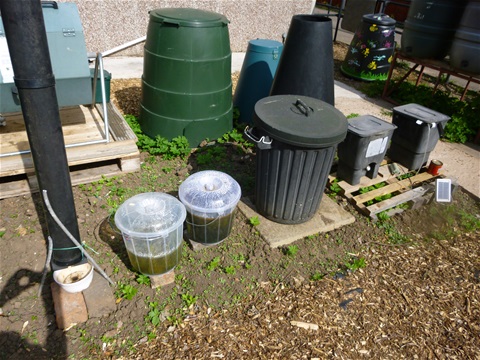
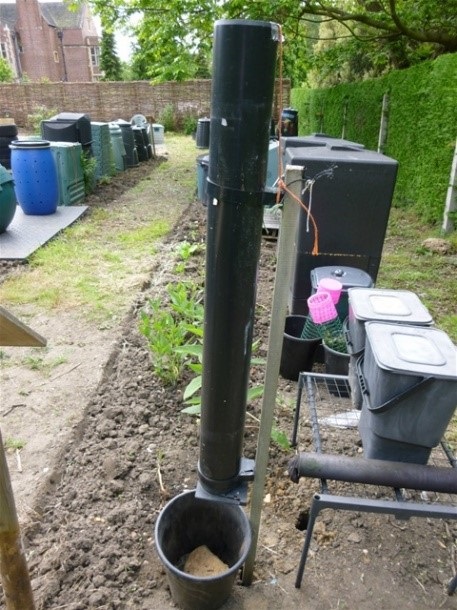
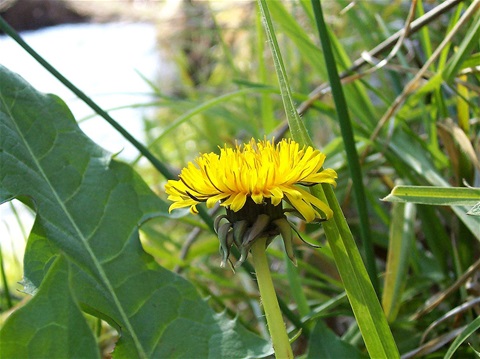
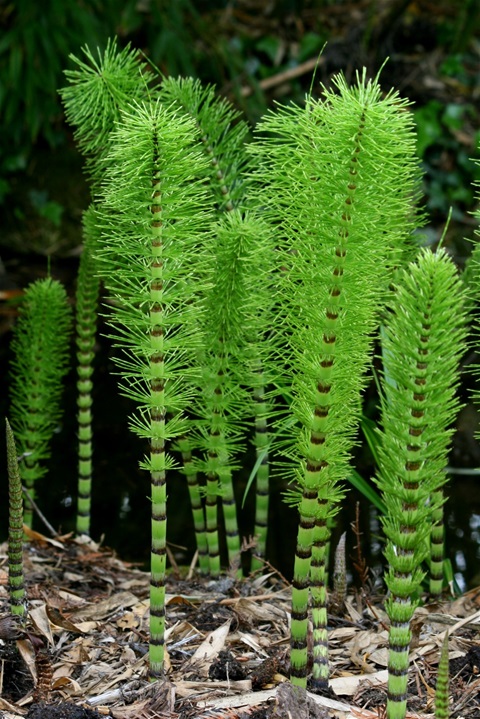
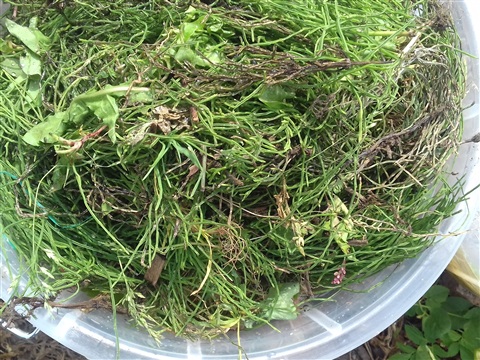
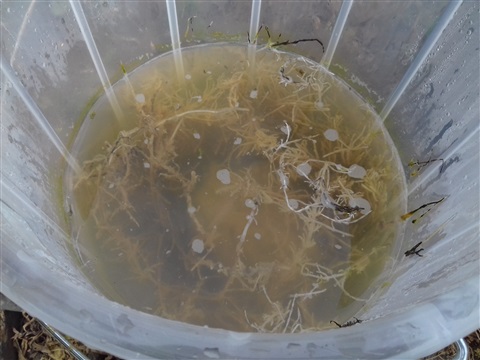
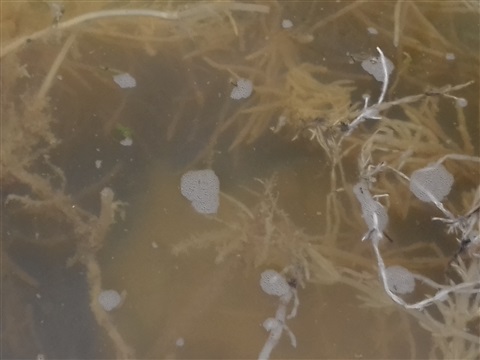
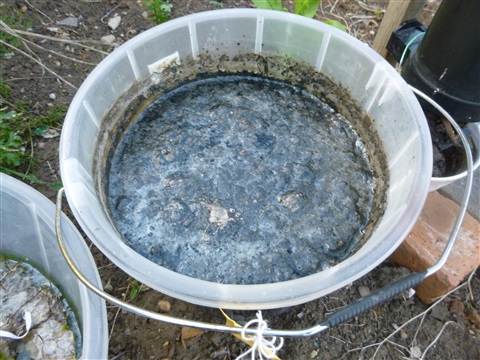
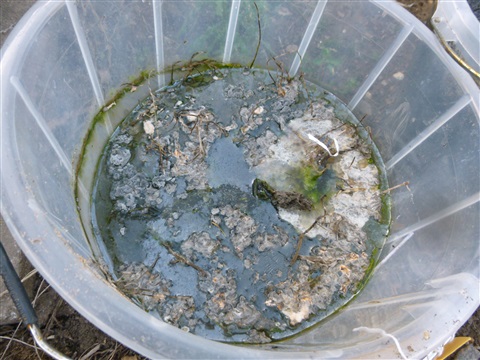
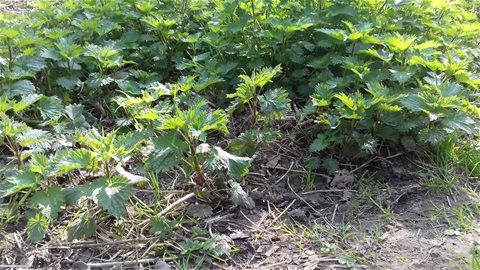
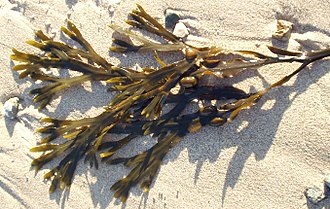
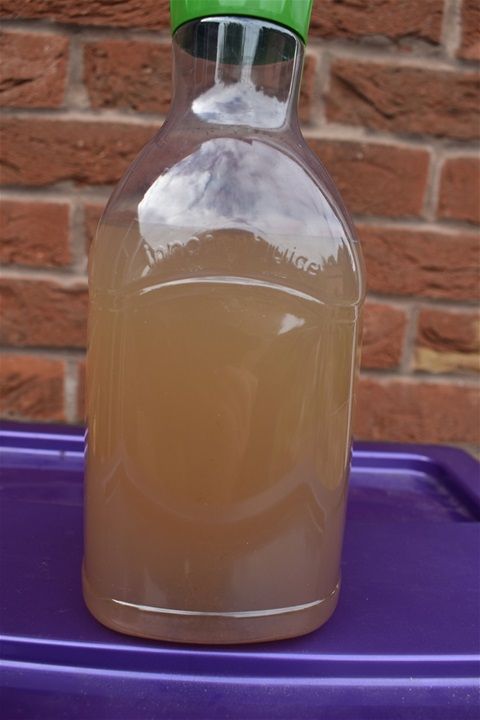
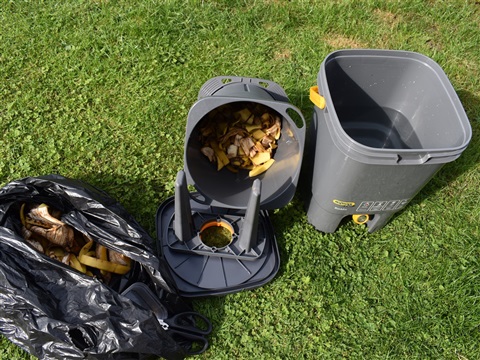
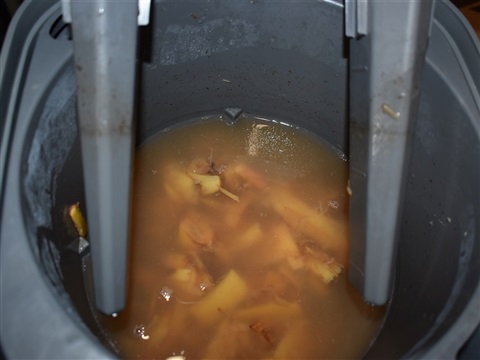
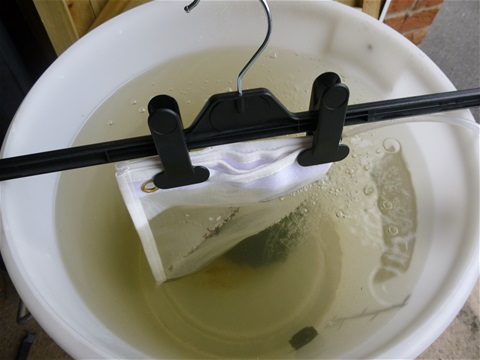
Peter Bilo
Would like to know more
Clare
Hi, im glad to find someone else suggesting drowning marestail as a way to kill off and utilise the plant. I have inherited a plot absolutely riddled with it and its a serious war of attrition!
Graham walker
Can I use grass clippings liquid food on my Roses
Jess
I would like to know more about the second aerobic stage you mention. How does this come about in stagnant conditions? Should we be putting a big load of anaerobic bacteria into the soil ?
jake ferguson
oh wow
Rod
I totally agree, in fact one of my colleagues was punched in the face by a neighbour who objected to the smell when put the tea on his paddock.
The Comfrey tube method also avoids the smell
nicky scott
bad idea to add water to comfrey! it really stinks! just add comfrey to a barrel with a hole in and divert liquid into a bucket it will flow after a week or so. then dilute